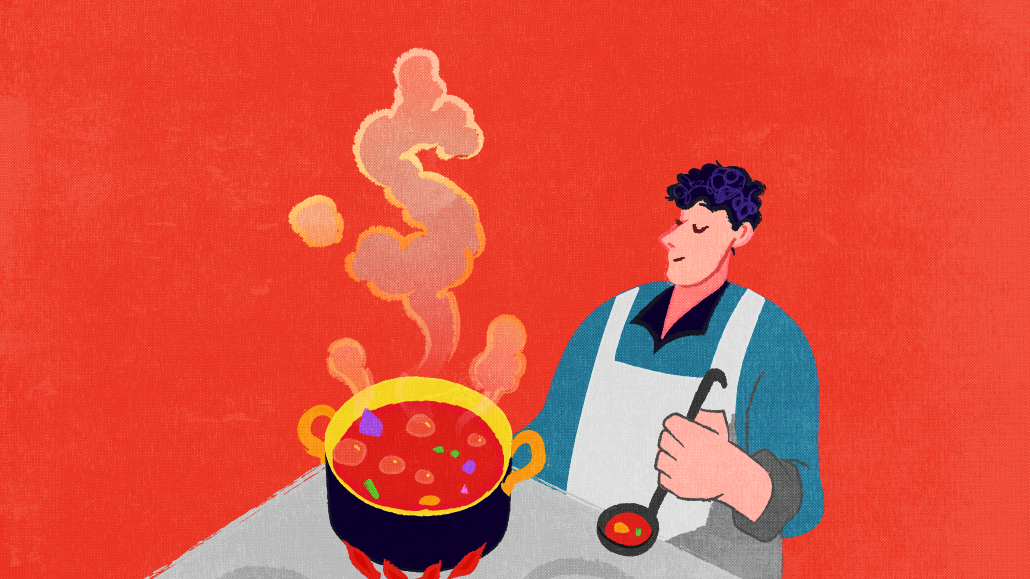Save 50% on a 3-month Digiday+ membership. Ends Dec 5.
The New York Times Cooking is letting readers taste test recipes over text to drive subscriptions

The New York Times is trying out a new way to boost subscriptions and engagement to its paywalled NYT Cooking recipe platform. With a simple text featuring an emoji, the publisher is dishing out 150 recipes for free.
From June 21 through August 15, people in the U.S. can text one fruit or vegetable emoji — like a strawberry, tomato, coconut or corn on the cob — to “361-COOK-NYT” and receive a link to a recipe for free featuring that food item. They will also get early access to special NYT Cooking events starting this July, such as cherry picking in Michigan. Normally, it would cost a subscriber $5 a month to access these features.
Once readers get a recipe, they can text that same emoji up to five times to get different recipes featuring that same ingredient. The recipes come from a pool of them that the Times team deemed popular, are easy to make and highlighted summer produce, said Camilla Velasquez, general manager of New York Times Cooking.
The Times hopes that giving away recipes for free via text message will help people who are familiar with the NYT Cooking product but aren’t paying subscribers to see the value of a subscription. The Times is not providing any additional special subscription offer or messaging to texters.
“It’s [for] people who are curious about [NYT Cooking], but haven’t really been able to take the plunge because they haven’t been able to experience enough of the recipes and this is their opportunity to do so,” Velasquez said.
Why emojis? Velasquez said it’s a “fast” and “playful” way to communicate with NYT Cooking and to simplify the process of finding summer recipes. It’s also a way to appeal to the younger audiences NYT Cooking is trying to target, such as millennials. For the text line, The New York Times is working with text messaging platform Subtext, which also works with other publishers like Condé Nast and USA Today Network.
This text line is part of a broader strategy at NYT Cooking. The focus for NYT Cooking’s team this year has been “easy to find, easy to make,” Velasquez said. The team was hearing from readers that Cooking recipes were too hard to make and had inaccessible ingredients, Velasquez explained, so it became clear that they had to highlight easier recipes to both draw new subscribers in and retain those who are already paying.
Ad position: web_incontent_pos1
There are a couple of ways NYT Cooking is responding. The overarching goal is to “simplify [NYT Cooking] as much as we can,” Velasquez said. The team is working on cutting down the number of ingredients and steps in some recipes. And they want to get more free and simple recipes in front of readers — such as with free seven-day and 14-day trials, and now with the emoji text line. The hope is to ultimately convert newly introduced readers into paid subscribers, who pay $5 a month or $40 a year for a subscription to NYT Cooking.
“If a user voluntarily texts NYT Cooking, this is a strong signal of propensity to engage [and or] pay and reduces friction for the user getting the recipe they are after,” said Arvid Tchivzhel, svp of product at subscription management and customer data analytics firm Mather Economics.
However, it will also require “significant outreach” to introduce audiences to this initiative, he added. The New York Times is marketing its new emoji text line with billboards in states like Michigan and Washington (for in-season cherries and corn, respectively), events and posts on its social accounts.
Despite recent reports that subscriptions to news organizations have stalled in the past year, The New York Times Company has continued to grow its subscriber base, adding 190,000 digital-only subscribers in the first quarter of this year. The company now has over 9 million digital-only subscribers, though it does not break out data on how many subscribers are specifically subscribed to Cooking.
In Q1 2023, The New York Times Company surpassed 3 million subscribers who were paying for a bundle (which includes access to the Times’ core news and standalone Cooking, Games, Wirecutter and The Athletic products) or multi-product subscription plan, thanks to about 520,000 new digital-only bundle and multi-product subscribers in the quarter.
Ad position: web_incontent_pos2
Velasquez said the main drivers of subscriber conversions are NYT Cooking app usage, videos on social media and newsletters. She declined to share how many NYT Cooking subscribers there are, or how many are converting through these platforms.
Texting as an audience engagement channel historically hasn’t been successful in driving subscriber acquisitions, according Tchivzhel, based on his experience working with publishers at Mather Economics. “But it is perhaps a deeper level of engagement that can drive more meaningful connections between [the] audience and the Cooking product,” he said in an email.
Other companies are also using text messaging as a marketing tactic, such as KBP Brands, a KFC franchisee, which recently expanded SMS marketing across its 847 U.S. locations.
More in Media

Digiday+ Research Subscription Index 2025: Subscription strategies from Bloomberg, The New York Times, Vox and others
Digiday’s third annual Subscription Index examines and measures publishers’ subscription strategies to identify common approaches and key tactics among Bloomberg, The New York Times, Vox and others.

From lawsuits to lobbying: How publishers are fighting AI
We may be closing out 2025, but publishers aren’t retreating from the battle of AI search — some are escalating it, and they expect the fight to stretch deep into 2026.

Media Briefing: Publishers turn to vertical video to compete with creators and grow ad revenue in 2026
Publishers add vertical video feeds to their sites to boost engagement, attract video ad spend and compete with news creators.
Ad position: web_bfu




